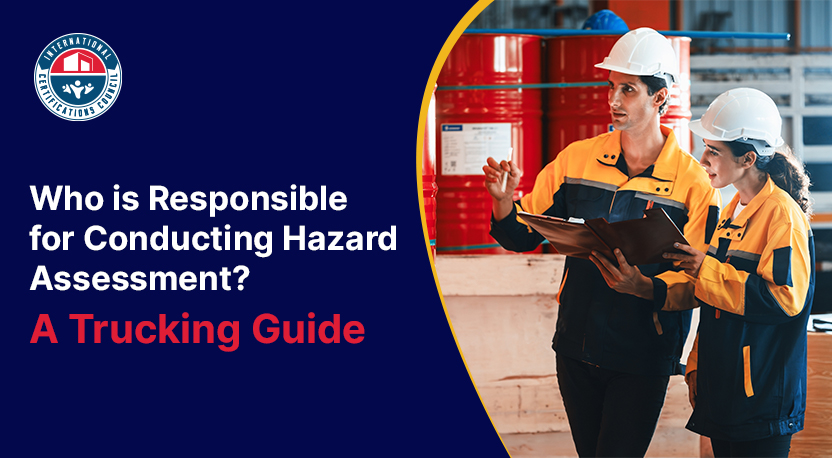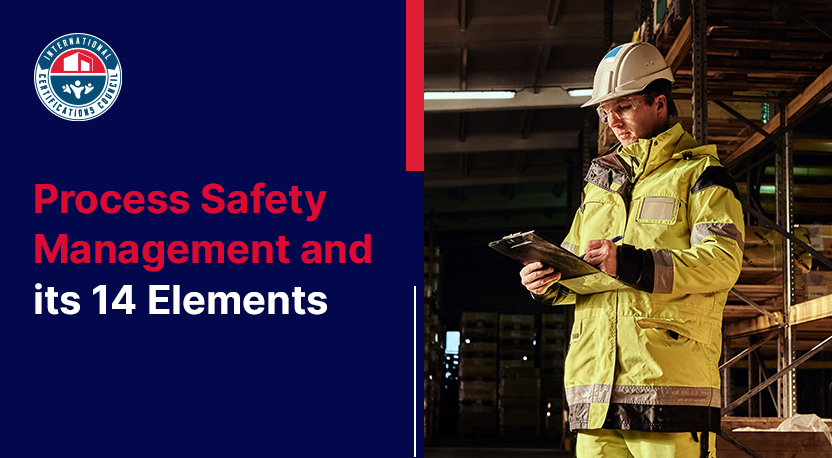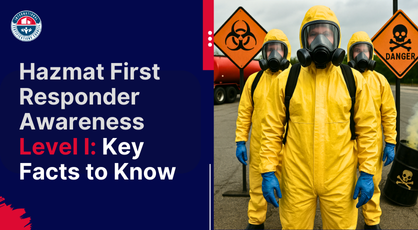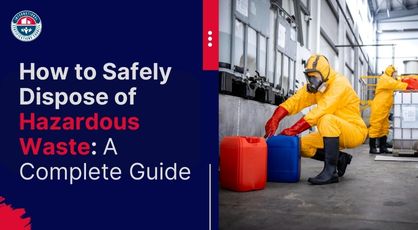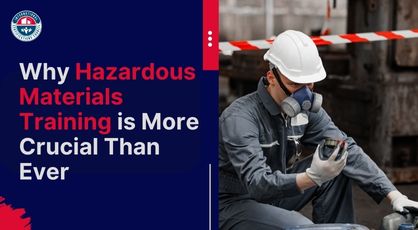There is a lot of responsibility involved in hazmat shipping and carrying dangerous chemicals. It is crucial to guarantee the safe and legal movement of such items from point A to point B.
But errors are simple to make, especially if you're not experienced.
When transporting hazardous chemicals, the majority of firms make five compliance errors. Learn how training may help you prevent them.
Mistake 1: Mislabeling Packages
Mislabeling shipments is a prevalent issue in Hazmat transportation. Not only are you making a small mistake when you stick the incorrect label on a package, but you are also endangering people. Consider a package labeled "non-hazardous" but contains corrosive elements. Its actual contents might be mishandled by someone, causing mishaps and injuries.
With training, you can better appreciate the significance of appropriate labeling. You'll discover how to recognize various hazardous substance types and apply the appropriate labels accordingly. With the right training, you can reduce the possibility of mislabeling and guarantee safe package handling.
Mistake 2: Inadequate Packaging
Putting dangerous items in subpar packaging is another common error. Although it might appear sufficient, a thin cardboard box is insufficient. Hazardous material packaging needs to be strong enough to resist misuse and accidental spillage.
The risk of spills, leaks, and contamination rises when improper packaging is used. You will get knowledgeable about the particular packaging needs for various hazardous material kinds through training.
You'll discover how crucial it is to use hazmat shipping containers made to resist the rigors of transit and packing materials with UN certification. If you've had the required training, you will know exactly how to package Hazmat items to make sure they arrive at their destination safely.
Mistake 3: Improper Documentation
Proper documentation is necessary while transporting dangerous goods. But a lot of people make the error of either not finishing or finishing paperwork improperly. Inaccurate or lacking documentation may result in penalties, delays, and even legal issues. It is essential to provide precise and thorough information on the hazardous items being delivered.
During training, you will learn how to correctly complete hazmat shipping documentation, which includes the fields required for UN numbers, shipping names, and danger classes. There will also be other types of documentation, such cargo manifests and emergency response information. You may lower the chance of compliance errors by making sure that the required documentation is in order with the right training.
Mistake 4: Ignoring Hazmat Regulations
Some people believe that hazmat regulations are not that significant, and therefore, they ignore them. However, there might be dire repercussions if DOT requirements are broken. To protect the environment and public health from possible risks, it goes beyond merely following the law.
Training is necessary to ensure compliance and comprehend Hazmat rules. You will gain knowledge of the many rules that control Hazmat transportation, such as documentation needs, standards for labeling, and packing requirements.
You can avoid costly mistakes and successfully traverse the complex world of Hazmat regulations if you have the proper training.
Mistake 5: Lack of Emergency Response Preparedness
Even the most carefully thought out plans may go wrong. This is why it's crucial to have emergency supplies while transporting dangerous materials. On the other hand, many people disregard emergency response preparedness because they think nothing untoward will occur.
You will get knowledge on how to manage various Hazmat scenarios throughout training, including spills, leaks, and exposure incidents. You will learn how to assess the situation, stop the leak, and notify the appropriate authorities. You'll be able to handle emergencies and lessen your bad impact on the environment and other people if you get the proper training.
Why Does DOT Compliance Training Matter?
Since DOT compliance training guarantees everyone's safety, it is crucial. In order to protect the environment, public health, and accidents, you must ship hazardous chemicals in accordance with DOT regulations. These regulations and guidance on how to observe them appropriately are taught at DOT compliance training.
Getting certified teaches you how to properly label, package, and complete the necessary documentation for hazardous materials. This content reads as if it is human-written.
This reduces the possibility of mishaps like spills, leaks, or even explosions while in transit. Additionally, it guarantees that rescuers have the tools necessary to handle the materials in an emergency.
Compliance training also helps you stay out of trouble with the law and save money on fines. There seems to have been a person who wrote this. If you break any DOT regulations, you may be fined or have your business shut down. You can safeguard the reputation of your business and make legal compliance easier with compliance training.
Because it enables businesses to do business morally and legally while simultaneously protecting workers and preventing accidents, DOT compliance training is crucial. This is something you cannot avoid if you handle and carry hazardous products for a living.
Why Choose ICCouncil's DOT Compliance Training Courses for Your Organization?
Choosing ICCouncil's DOT compliance training courses for your organization can provide numerous benefits and advantages. Here's why:
Knowledge and Experience: ICCouncil provides a wealth of expertise and experience with DOT compliance training. Course designers and instructors are industry specialists who understand the complexities of DOT legislation and who may provide valuable guidance and insights.
Comprehensive Curriculum: Every aspect of DOT compliance is covered by our training programs, which range from staff training to documentation to packaging and labeling. Their in-depth curriculum guarantees that participants will have a thorough comprehension of DOT laws and know exactly how to comply with them.
Interactive Learning: A range of instructional methodologies, including case studies, lectures, and hands-on training, are used in the dynamic and interesting training courses. The application of information to real-world scenarios is improved by this participative approach.
Tailored Solutions: ICCouncil is cognizant of the fact that every organization is unique and has unique challenges and requirements regarding compliance. They offer customized training programs made to fit the needs of your business as a result. Regardless of the size of your company, ICCouncil can create a training program that suits your requirements.
Convenience and Flexibility: The straightforward and adaptable design of ICCouncil's training programs allows participants to learn at their own pace and on their own time. In order to accommodate your requirements and interests, ICCouncil also offers online training.
Certification and Accreditation: After completing the DOT compliance training programs successfully, participants earn a certification proving their knowledge and understanding of DOT laws. This accreditation might improve your company's standing and show that it is dedicated to compliance and safety.
Ongoing Support: After completing the course, individuals can continue to get support from ICCouncil. If you have any questions about DOT legislation or need assistance with compliance, the experts at ICCouncil are here to assist you.
Final Thoughts
Attention to detail, competence, and knowledge are necessary to master DOT Hazmat shipping.
Common mistakes like mislabeling items, utilizing shoddy packaging, and failing to keep records in order can be avoided to guarantee regulatory compliance and shield people and the environment from possible dangers.
Hazmat shipping training is essential to avoid these mistakes and safely ship hazardous chemicals. Invest in appropriate training now to become an expert in Hazmat shipping!


